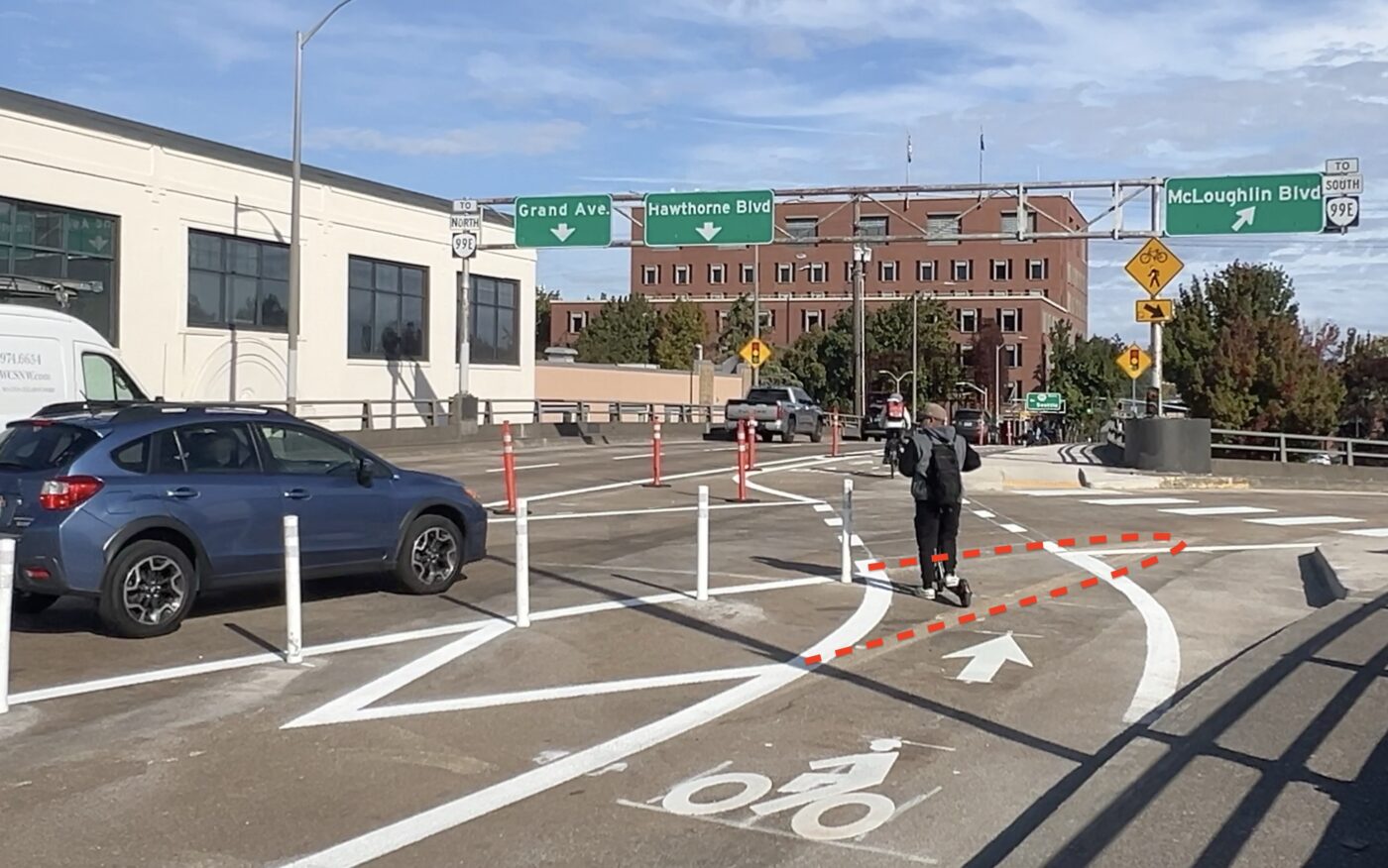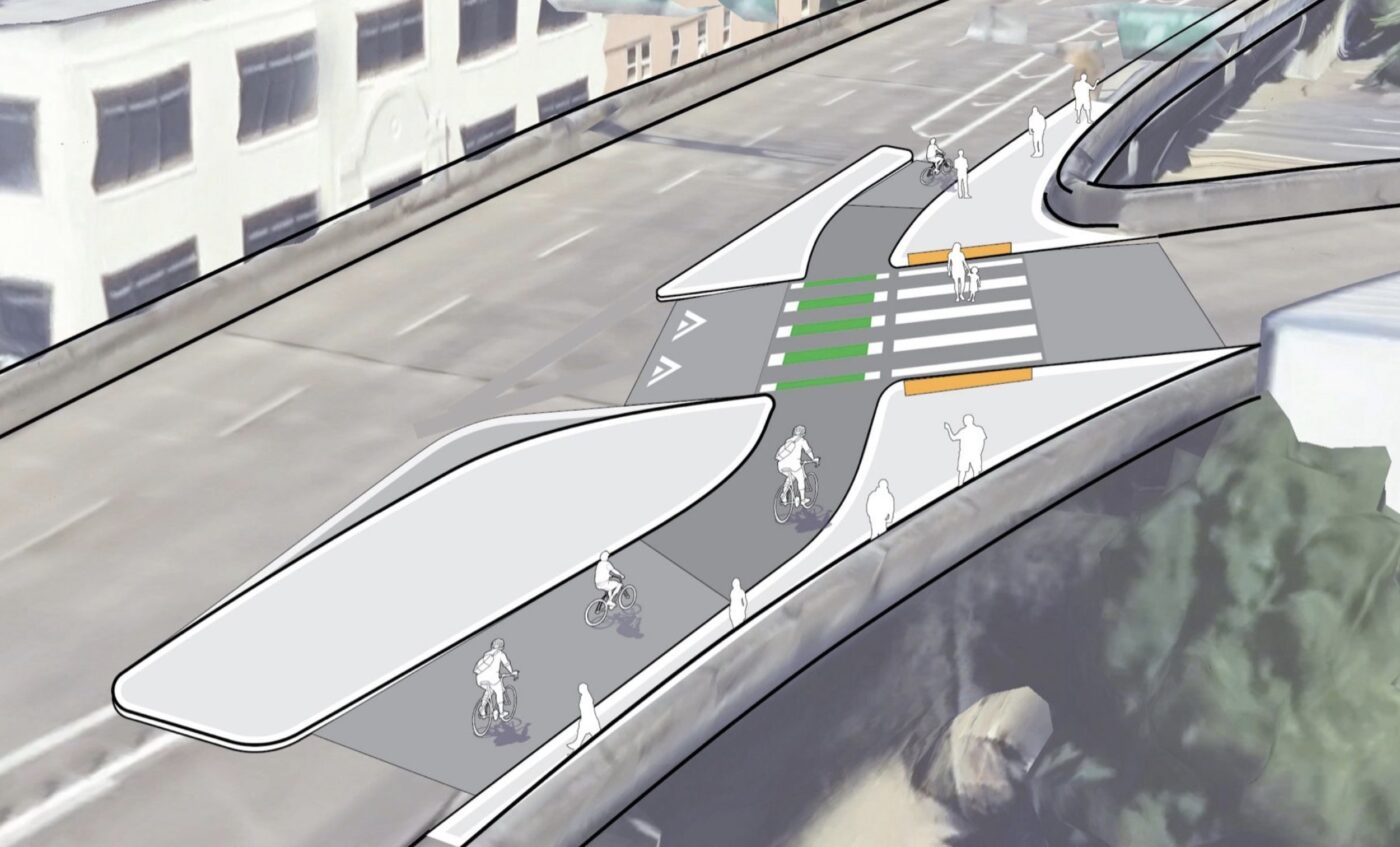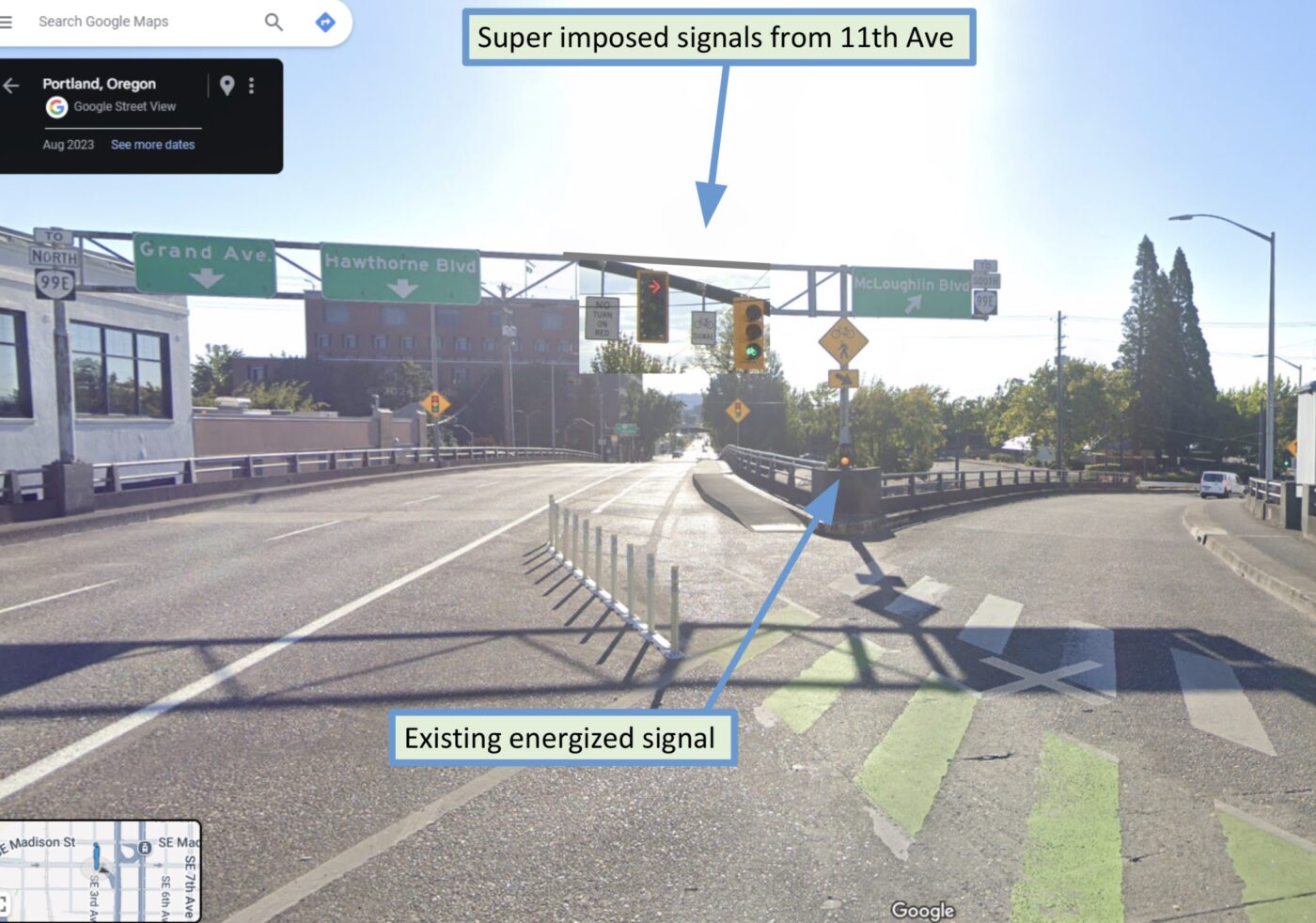
The community is still processing how Multnomah County engineers and planners could have ever approved a design for the Hawthorne Bridge viaduct that put bike riders in even more risk than usual.
Over the course of a week or so, we learned that the County changed the existing bike lane design at the SE Clay/Martin Luther King Jr Blvd off-ramp, then changed it again after hearing such a loud backlash. Now many folks are wondering how this opportunity to fix a clearly dangerous intersection was missed and what can be done going forward.
To back up a bit, this work from the County was done as part of a $9.5 million paving and maintenance project. Like we’ve seen from Portland Bureau of Transportation, the County took advantage of a clean slate to make adjustments to the bike lanes on the viaduct, including a tweak to the SE Clay offramp. Why? Because it’s common knowledge that this through bike lane and right-turning general vehicle lane is a conflict point.
Given the critical tone of my story about the change Wednesday, and the fact that at least one person was actually hit at this location after the change was made, I was eager to hear more about the thinking behind the design change from the County. Surely they could supply some sort of rationale for the striping shift that created a very awkward angle for bike riders while doing nothing to deflect or deter driving movements.
I didn’t end up learning anything new from the County. In a statement emailed to BikePortland Thursday afternoon, they acknowledged receiving “a lot” of feedback about the initial change and said they made, “immediate changes to that bike crossing to reconfigure it to better align with what was previously in place.” A few hours after my story posted, I rode by the intersection and uploaded a video (above) of the reconfiguration to verify that it had, indeed, been returned to its previous design.
Wednesday night also happened to be the monthly meeting of the Multnomah County Bicycle and Pedestrian Community Advisory Committee. I know a few members and they assured me this topic would be discussed. They also shared the BikePortland story and video with committee members and County staff at the meeting.
One of the committee members, Andrew Holtz, was willing to share his personal reflections about the situation (note Holtz is speaking only for himself in these comments and is not authorized to speak on behalf of the committee). What does Holtz think happened?
“Rather than an ‘oversight’, my sense is that the real world outcome was unanticipated and that the effect of the angle change was thought to make it easier for people on bikes to see cars coming without having to turn their heads as sharply,” Holtz shared in an email to BikePortland. He based that feeling on recollections of a discussion at the committee one year ago when County staff presented on the project.
“It seems there wasn’t much discussion of the angle change because it didn’t seem like it would make much difference. And there was some thought from committee members that a sharper angle would make it easier to turn and see drivers coming,” Holtz added. He also shared that County staff plan more discussions about how the change was developed and what lessons can be taken from this experience. Staff will likely address the committee about this future at a future meeting. “It’s fair to say everyone, committee members and staff, are looking for lessons for the future.”

To the County’s credit, they changed course quickly and altered the design. But this back-and-forth has triggered interest from several people to actually make the design safer.
Nick Falbo, an urban planner and infrastructure designer who earned acclaim in his field for pioneering work on protected intersections and worked at PBOT for six years, shared a drawing on Bluesky this morning for the design he’d recommend. Falbo’s drawing shows a raised crossing and concrete islands to create a more predictable path for bike riders and slow drivers in the turn. “Drivers should yield to people walking and biking, and we should design the crossing so that behavior is intuitive,” Falbo wrote of his “Dutch-inspired” design.
And a local bike advocate who I’ll keep anonymous for now, copied BikePortland on an email to a member of the County advisory committee that shared a PBOT plan drawing of this intersection. The drawing was created for PBOT’s Central City in Motion plan, a list of 18 recommended projects that includes revamps to improve biking and transit service on SE Hawthorne and Madison.


The CCIM conceptual design (above left) for this intersection shows a bike signal at the off-ramp. The bike signal would be triggered by approaching riders and an existing signal head that blinks yellow would be upgraded to a full signal for right-turning drivers. PBOT’s website says designs for the project have been finalized, “and will be delivered by Multnomah County.” But somewhere along the way, the signal element of the project has not been delivered. I’ve asked PBOT for an explanation and will share more when I hear back.
We clearly have solid options to improve this intersection and now there’s considerable public urgency to do something. It’s unfortunate this opportunity was missed, but I feel confident in saying a longer-term, higher-quality fix is now squarely on the radar. Stay tuned.





